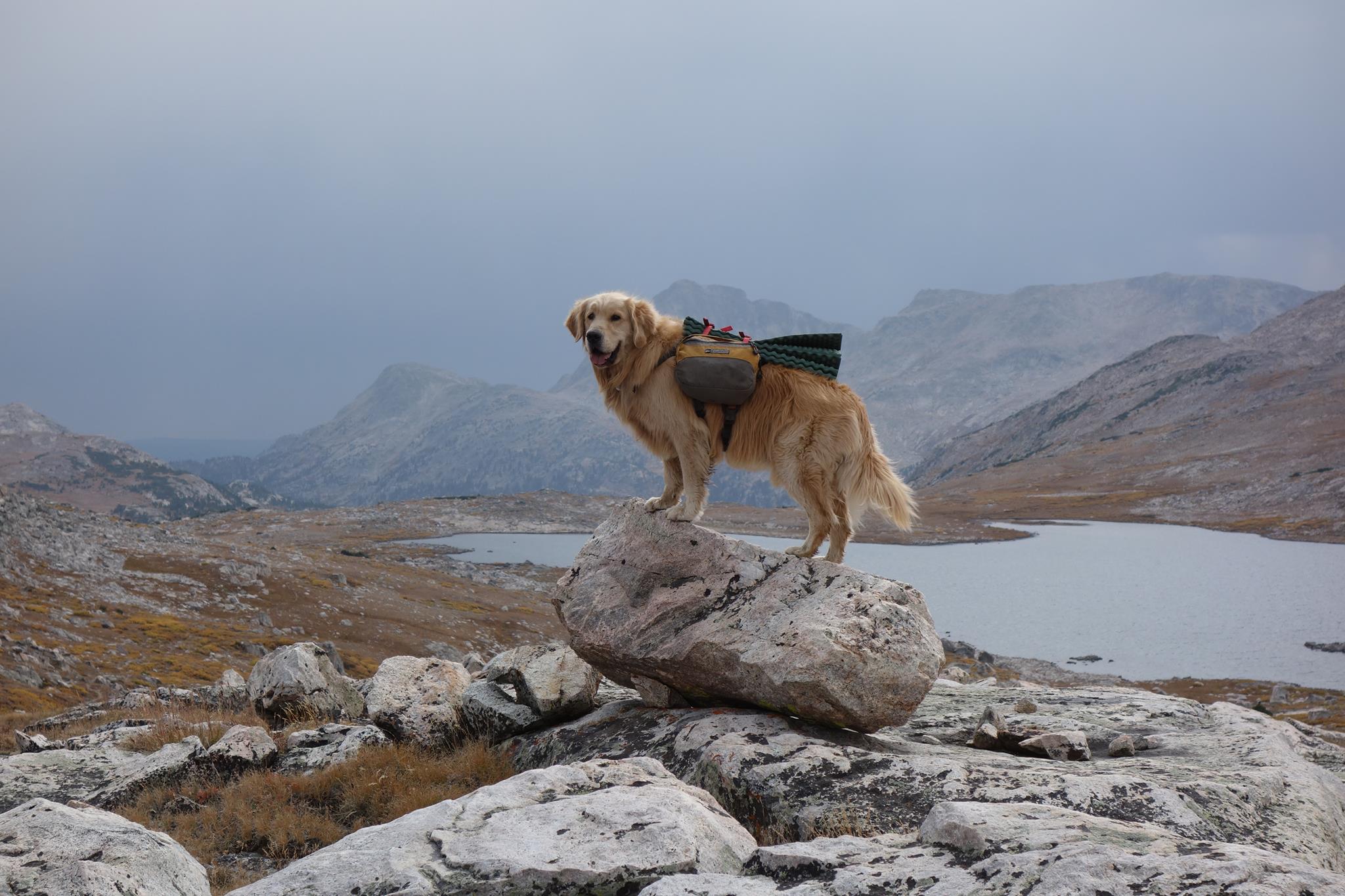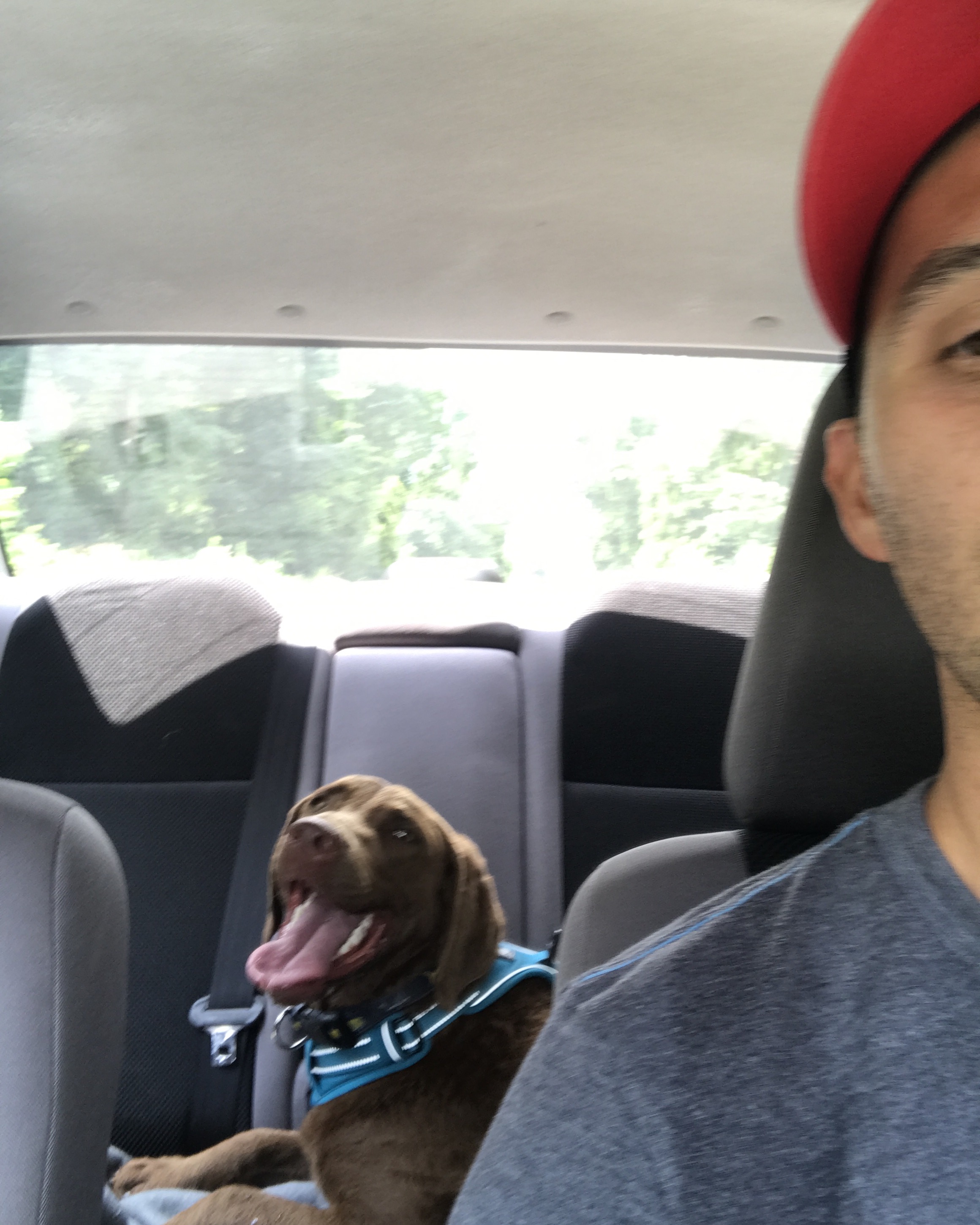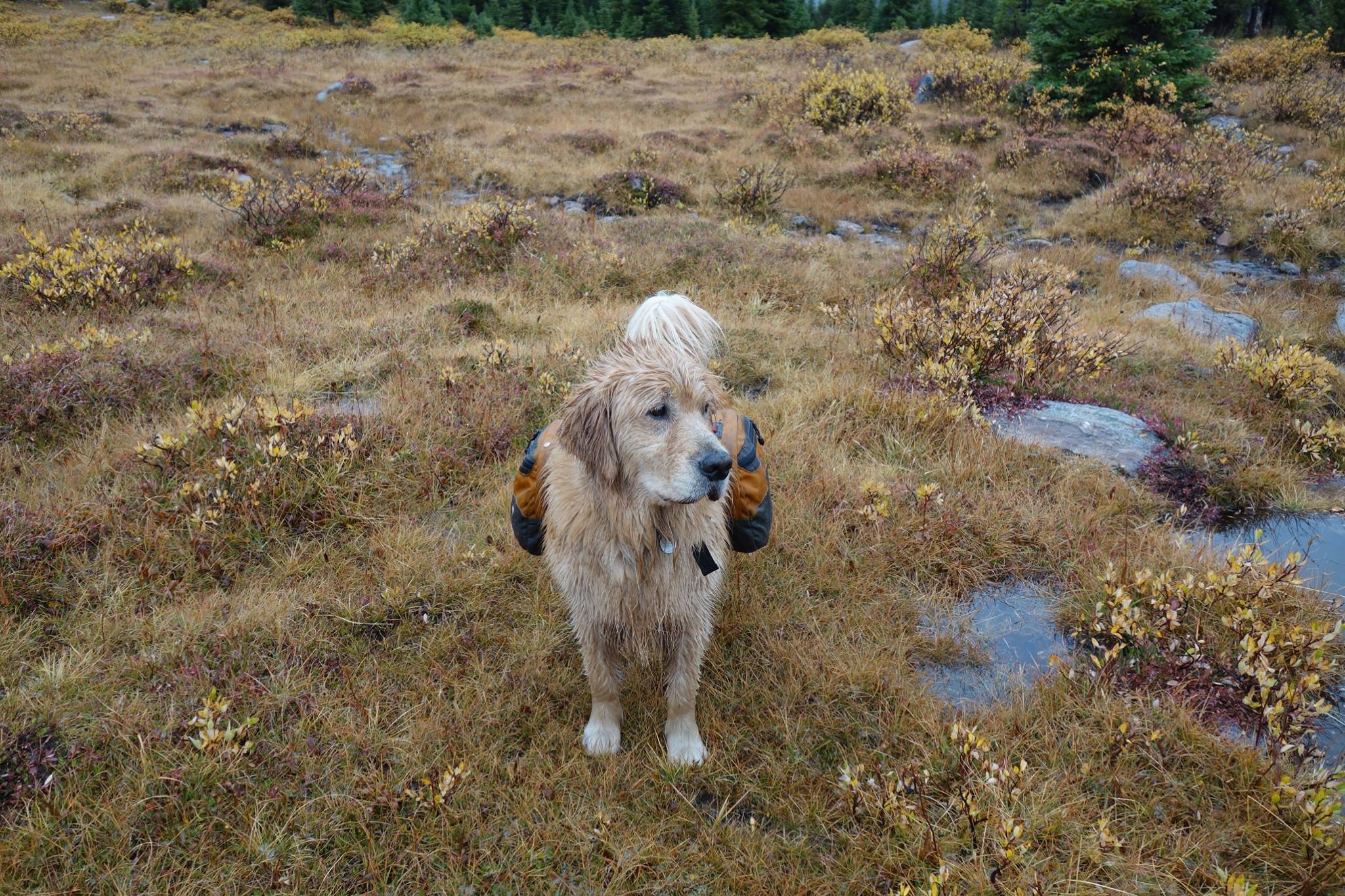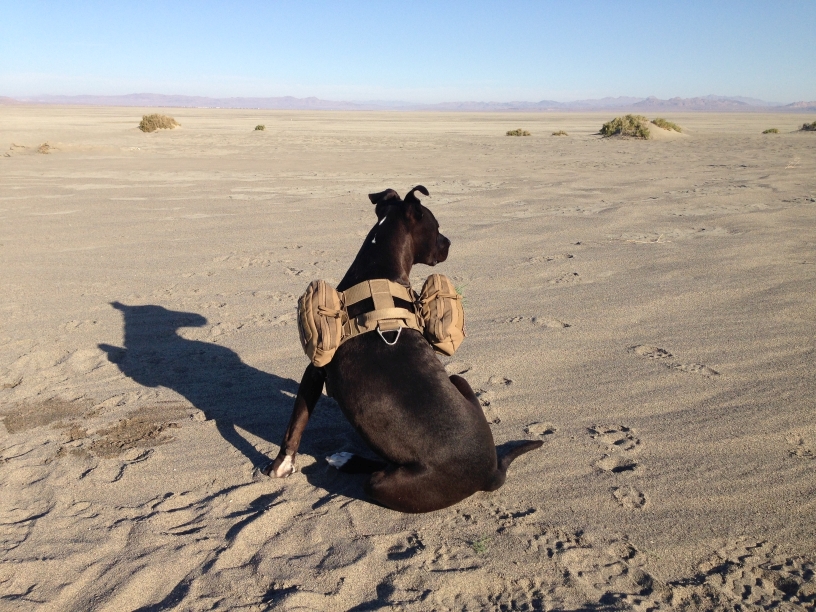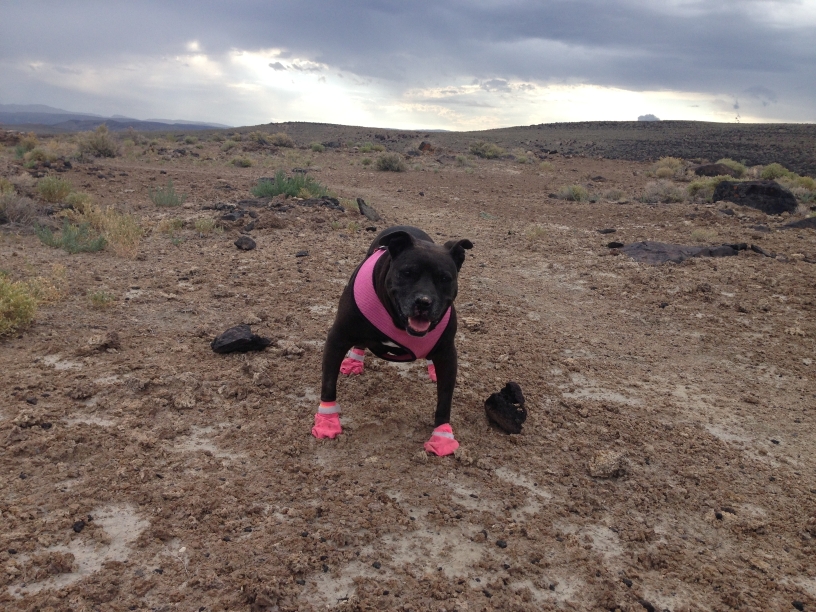Topic
Backpacking with a dog
Forum Posting
A Membership is required to post in the forums. Login or become a member to post in the member forums!
Home › Forums › General Forums › General Lightweight Backpacking Discussion › Backpacking with a dog
- This topic has 42 replies, 16 voices, and was last updated 6 years, 11 months ago by
 BlackHatGuy.
BlackHatGuy.
-
AuthorPosts
-
Jul 30, 2017 at 8:13 pm #3481973
I’ve been considering getting a dog. It is becoming increasingly difficult to find people to backpack with and thought maybe a dog would be good company. For those of you with experience backpacking with a dog I have some questions.
- Is there a general rule of thumb about the amount of dog food per day that should be packed for a medium sized dog like a Blue Heeler?
- Are there certain types of high calorie dog food that would be best for backpacking?
- How much weight can a dog carry? I’ve seen an estimate that a dog should be able to carry a certain percentage of its weight but I can not remember what it was.
- Can a dog usually carry most of the food it will be eating if going out on a week long trip?
One of my main concerns is having to carry a bunch of extra weight with dog food ect. Hopefully a dog can carry most of it’s food. I grew up with Blue Heelers. I know they are tough dogs. Ours could follow us all day when we were on horseback working cows. What other breeds would be good at putting in long days?
Jul 30, 2017 at 9:40 pm #3481988You won’t regret!
I always plan my trips so the dog can go. I’d rather forego National Parks than leaving him at home. Mine is a McNab, a cattle dog with a Greyhound body and the head and coat of a short haired Border Collie. Fast, nimble footed, never runs hot, but not a burly, strong breed.
He stays within 200′ on the trail without commands, and cannot handle separation.
On overnighters he gets what he eats at home plus 20% or so. I split it in two, as opposed to the usual one dinner meal. We use Nutri Source Super Performance.
I do not want to weigh him down, and go along with how I see him behave wearing the pack, rather than sticking to a hard number of a percentage of body weight. For six or seven days the weight of his food on day one is close to the max of what I feel good about.
We bring an ensolite pad and a down coat, plus a simple bowl and a little vial of olive oil to make him drink when we want him to. Also a leash/long line for tricky spots, lowering down ledges, steep snow, etc. For ski trips he wears googles.
Jul 30, 2017 at 10:12 pm #3482001+1 to all that for me. Except for the olive oil and the goggles. (Never considered oil, and havemt found goggles that can fit.
One note: Black Mouth Curs are superior to most other dogs on and off the trail.
Jul 30, 2017 at 11:57 pm #3482030We rescued a blue heeler mix a few months ago and I’ve yet to go backpacking with her. She’s totally won our hearts over at home and camping so backpacking seems like the next step. My son starts high school in a few days and I expect he will have less interest in backpacking soon so I’m going to want a buddy to go out with.
I’m sorry I don’t have any answers for you but I’ll be following this thread carefully. :)
Jul 31, 2017 at 6:05 am #3482048From what I’ve seen medium sized (40 – 60 ish lbs) mutts tend to be pretty durable. Something else to consider is what climate you want them to be comfortable in… i.e. color, length of hair, and whether they have an undercoat or not.
Jul 31, 2017 at 4:26 pm #3482181I feed my dog 3 cups of kibble at home and 4 on the trail. Plus I share some of my food with him as well. And he gets a junior burger if I stop for fast food on the drive and has even had his own steak after one trip. So he’s perhaps a bit spoiled. :)
He easily carries all his gear/food for a week long trip and it comes in at 8 pounds. He’s usually in the high 70’s weight wise so that’s around 10% for him at the start. I’ve seen people say they can carry up to 25% of their weight. My vet says to try to keep at 15% max. In addition to kibble/treats, he carries a frisbee (dual purpose: playing and food dish), a collapsible water bowl, first aid kit, a small container of Musher’s Secret, a long lead, 1 stake (I stake him out at night since we sleep under a tarp and I don’t want him wandering around camp), 50′ hank of rope for hanging his pack when needed, some biodegradable poop bags so I can move and bury his, and 2 usually empty water bottles for dry camping. I carry his cut down Z-rest because I got tired of it flapping around on his pack. He doesn’t really need the insulation but it’s easier to train a dog to do something (go to bed) than not to (stay off my bag).
My backpacking buddy, named Buddy, is a Golden Retriever. Not for his backpacking abilities, just the breed I prefer. He easily handles anything I can but we don’t do big mile days. 10-16 miles is pretty common for us.
Remember that a dog’s pack weight is mostly food so the weight drops very quickly on a long trip. The way it works out for us is we normally have a bit of a drive so day 1 starts later and has lower mileage. By the time we leave after breakfast the next morning, a day’s food is already gone.
Personally, I prefer a floorless shelter. My dog is usually wet and it’s nice not having to deal with a wet, messy floor.
Also, don’t have them carry weight until they are a year old and mostly fully developed. An empty pack is OK if you want them to get used to it but I’ve never bothered to do that. They get comfortable with them pretty quick.
Good luck. If you love dogs and love backpacking, the 2 are a perfect match.
 Jul 31, 2017 at 4:40 pm #3482187
Jul 31, 2017 at 4:40 pm #3482187Hey Randy, thanks for sharing all that information. You mention that you carry a stake for at night. I have a (heavy) spiral stake that I’ve used with my dog when car camping. What kind of stake do you use to tie your dog off to at night when backpacking?
Jul 31, 2017 at 4:50 pm #3482189A heavier duty aluminum hook or shepherd stake like you’d use car camping. Not too heavy at 18 grams but holds pretty good.
Jul 31, 2017 at 5:31 pm #3482197Excellent. Thanks.
Jul 31, 2017 at 6:07 pm #3482206Our 70-pound, 5-year-old lab gets one cup of kibble morning and night. 2 cups total, 6-7 ounces total at home.
150% of that on the trail for modest mileage, 8-15 miles/day on family trips.
As a older puppy, she was eating 50% more at home and on the trail.
If you plan to have them use a dog pack, train them on it around town so they learn how much wider they are. If putting on the pack means they’re going for a hike, then the pack will become a happy thing.
I’d keep the dog pack light to very light when they’re growing. But I’d use it, so they get used to at a time when they learn faster and you’re teaching them a lot of other commands and behaviors.
In addition to really solid “come” “sit” “stay” and “heel” (each with a verbal and visual hand/arm signal), I’ve trained my dog to return when she senses another party or critter ahead. She gets praise and a treat and I leash her up so she doesn’t surprise people that way (her coat looks very much like a black bear’s). She perceives other hikers and wildlife LONG before I do.
If you’d be using a leash on the trail or for areas around other people, in addition to the standard “heel”, I trained our dog in Seattle “other way” which meant, “you’ve wrapped yourself around a lamppost/tree and you need to reverse your rotation to untangle yourself.
Not related to hiking, but when you’re in the mode of teaching a new command each week, figure out ALL the commands you’ll ever want them to know. Standard puppy class doesn’t cover some of my favorites:
“close the door” when there’s an open exterior door somewhere in the house and I want them to jump on it to close it.
“move” which means be somewhere else like when I’m walking through with a hot pot. And, of course,
“get me a beer”.
Jul 31, 2017 at 6:20 pm #3482210Jul 31, 2017 at 6:37 pm #3482216David, I would really like to hear more about how you trained your dog to return when another animal or person was nearby.
Jul 31, 2017 at 9:48 pm #3482258“how you trained your dog to return when another animal or person was nearby.”
One summer, I decided I wanted to add that her vocabulary. When I’d notice someone else was coming our way, I’d call her back using my usual verbal and visual “come”. And then clip her leash on, praise her, and give her a treat. Then we’d step off the trail and let the other party go by. And give another treat. She’s pretty smart and it only took about 5 or 6 times before she was returning when she sensed another party was close. Later, I expanded it to moose and other critters, initially using those times when I’d see them first (in tall glass, heading upwind). She quickly added moose and recent bear scent to the list and now returns for those, too.
Jul 31, 2017 at 9:52 pm #3482259Oh, and Jeff wondered about more calorically-dense dog foods. I know a few of the premium brands have formations for dog mushers (whose dogs burn A LOT of calories running 100 miles a day). Most of them use cheaper kibble around town (and 5-cent-per-pound pink salmon in odd years) and then transition to the good stuff before a big race like the Iditarod. I could ask when I see one next, but I’m sure Google can find their forum posts. Iams seems one of the most common brands among local mushers (they make lots of different formulations).
The top-ten mushers get sponsored by dog-food companies (among others) and get truckloads for free to maintain their 200- to 300-dog kennels.
Jul 31, 2017 at 9:54 pm #3482260Dog mushers like to be able to see the dog’s ribs a bit: if they have more fat than that, it just slows them down. So mushing dogs are constantly very food-motivated. That also must help with joint problems and delay old-age issues, like any life-long calorie-restriction program does.
Aug 1, 2017 at 9:17 am #3482296Thanks for the great info everyone!
Aug 1, 2017 at 10:48 am #3482315I don’t, and probably never will, have a dog, but this thread is great. I’ve done a couple of trips with others who have dogs. Bob Moulder’s Cyrus ranks up there as one of the best. A few years ago I was on a horsepacking trip in northern PA when we came across a large rattlesnake. Our guide used it as an opportunity to train his dog (who ran without a leash with the horses) to stay away from them.
I’ve also seen Bob raise/lower Cyrus during some nasty rock-strewn ascents/descents so I think a harness that fits them well is critical and they have to be comfortable with you doing all the work.
Aug 2, 2017 at 12:32 pm #3482626“A few years ago I was on a horsepacking trip in northern PA when we came across a large rattlesnake. Our guide used it as an opportunity to train his dog (who ran without a leash with the horses) to stay away from them.”
In a Canine Good Citizen class we took, the instructor threw in a bonus section on snake proofing your dog. Rattlers are prevalent in the lower foothills near Denver. He used a fake cobra and 2 remotes connected to a MP3 player/speaker and a citronella sprayer, both placed near the snake. We walked the dogs up to the snake and he played the sound of a rattler. When the dogs showed interest and approached the snake, he triggered the citronella sprayer. Buddy wouldn’t even walk up within 10′ of the snake after the first pass. Some of the dogs needed 3 or 4 passes but eventually none of them would approach it. We don’t hike at lower elevations where there are rattlers so I have no idea how well it took. But dog’s have very good memories so I wouldn’t be surprised if he avoided them if we saw one. Either way, I thought it was a clever training method to encourage the dogs to avoid snakes. As I said earlier, it’s always easier to train a dog to do something rather than to not do something. Especially when it’s something difficult to train for. “I think I’ll bear proof my dog. Now where do I find a bear????”
Aug 2, 2017 at 12:45 pm #3482628“Randy, never heard of Musher’s Secret. Could be a useful product during certain conditions, like this:”
It would be. My dogs’ pad’s get toughened up from where we walk and hike already and have never had a problem. But my vet, who works the Iditarod, said it’s good extra protection. I don’t apply it for trips that are mostly on trails. I do apply apply it when I know the conditions will be rough, like a 14’er or on our trips to the Winds. I also use Bag Balm on their pads once a week to keep them supple. YMMV but this regimen has worked well for us.
Aug 3, 2017 at 10:43 pm #3482941First off, blue heelers are fantastic trail dogs! We have a lot of heeler mixes where I am, because they are used as sheepherding dogs on the Navajo Rez. We have a 45-lb heeler mix and have taken him on lots of trips. Here are some tips:
- We pack about 2 cups food per day. But for some reason, he doesn’t always want to eat while in the backcountry. Too excited? Usually we let him do what he wants, but if he doesn’t eat for a couple days we’ll put some olive oil and/or bacon bits in a small portion of food. That way he at least eats something.
- If you want to reduce food weight, oil is great. But start adding oil to the food a week or so before you leave, so the dog can gradually get used to it and not have bowel issues with a sudden diet change.
- Contrary to Randy, I prefer a floored shelter with enclosed mesh. Reason being that with an enclosed space we can clean off his paws before bringing him in, and then he stays clean.
- Get booties in case of very rocky terrain or injury. But not the expensive and uncomfortable vibram ones from REI – get cordura ones from dogbooties.com. They will not last as long as the expensive ones but it’s not a big deal if you lose one and they are *way* more comfortable for the dog.
- Learn a little dog first-aid. This could be its own thread. Broken nails/dewclaws are the most common ailment for ours. We always carry a small leatherman or pliers when hiking with him, in case we have to pull off part of a broken nail. I asked a vet and he said that if part of the nail is loose, it’s best to pull it off. Use stypic powder if it bleeds a lot, then bandage it and keep hiking. Bring vet-wrap and gauze for bandaging and booties to keep the paw clean.
We also had an incident car camping where he ate something (maybe mushrooms) and starting acting really weird. We drove 4 hours back to town that night. Now we carry an ounce of hydrogen peroxide to induce vomiting, and/or activated charcoal.
Aug 4, 2017 at 7:25 am #3482988I just want to thank everyone for all their responses and the OP for starting the thread. I have a nearly 1 year old 55 lb (and growing) Chesapeake pup that I want to be my trail pal. Lots of my questions have been answered. I’m hoping to get her her first pack and perhaps booties for her upcoming birthday. Any other tips or suggestions for booties?
 Aug 4, 2017 at 9:51 am #3483010
Aug 4, 2017 at 9:51 am #3483010That’s a great tip on the hydrogen peroxide Nick. I’m going to add that to his FAK.
As far as floorless vs floored, it’s not just the paws I have to deal with. :)
 Aug 4, 2017 at 10:19 am #3483022
Aug 4, 2017 at 10:19 am #3483022Love that picture Randy!
Aug 4, 2017 at 10:48 am #3483033I thought I should also post the full instructions that I got for the hydrogen peroxide (from my mother who runs the New Mexico Poison Control Center):
1) Dosage is 1-2ml/kg. We carry one ounce for a 45 lb dog which is right in the middle of the range.
2) Hydrogen peroxide will lose effectiveness over time from contact with oxygen. So buy a new bottle of H2O2 from the store, decant it into a smaller bottle and fill that to the brim, then put something on the threads to make a better seal (I used petroleum jelly). For good measure, I then sealed it inside a vacuum bag.
3) Give the dog a little food first. You may have to give it some enticing human food to make sure it eats. Then hold his mouth open and pour the peroxide down his throat and watch the fireworks.The other option is activated charcoal, which you can give for a longer time in dogs than in humans (because their digestive tract is horizontal the digestion is a slower). Up to 6 hours after eating the substance, although the longer you wait the more toxin is absorbed, so it’s less effective. Don’t buy charcoal for aquariums, you want the really good stuff sold for human consumption. EZ Char is one brand and has dosage guidelines designed for human children, which you can use for dogs with the same weight.
You can also use both, but the dog might vomit up the charcoal. So peroxide first, then wait a while before adding the charcoal. Hope that helps someone! We had a miserable drive back the night ours ate something, and he ended up staying overnight at the vet because they were monitoring his extremely low heart rate. He was ok, but if we had had peroxide and charcoal we could’ve treated him in the campsite within about 2 hours of ingestion when we first noticed symptoms.
Aug 5, 2017 at 5:14 pm #3483243Jeff,
I’ve hiked with dogs for about 2500 miles in Arizona and Nevada so I might have experience that’s relevant to you in Utah.
Hiking with dogs is my absolute favorite way to spend my time. If I could, that’s how I would spend every day of the rest of my life. And I’ve come to learn that dogs are like kids – the more time that you spend with them, the better they turn out. So the time spent hiking together will increase your appreciation for them. As Randy said, if you love dogs and you love backpacking, you’ll love backpacking with dogs. Look at my boy sitting in his Helinox:

You should be aware that a dog’s individual personality has a great deal more effect than does the breed. I’ve had dogs that loved covering big miles, dogs that tolerated it, and even one that was, like Jim Gaffigan, more “indooorsy” and ran in the opposite direction when she saw me with a backpack. So it is possible to get an athletic breed but a dog that just doesn’t enjoy hiking.
I encourage you to rescue from a shelter. Rescues are grateful and so they bond more closely to you. I’ve had a number of dogs both from breeders and from shelters, and the difference has been quite noticeable. I’ve loved them all but the rescues have been the best companions. If Utah is like Nevada, you will find cattle dogs at the local shelter because ranch dogs are rarely neutered.
Hiking in the desert with dogs presents challenges. The anatomy of a dog makes them more susceptible to overheating. Their bellies are like sails catching the heat radiated up from the ground. So winter is much better than summer (plus, no rattlesnakes in the winter). I carry a lot of extra water in the summer to pour over my dogs and to let them drink frequently. In the winter, they hardly drink at all because they eat snow as they hike.
You’ll be amazed at how they move in the mountains. The first time I took my dogs from North Carolina to Nevada, I was nervous about hiking in the mountains. My girls were just two Southern belles from the Carolinas that had only experienced the grass backyard of my place outside of Ft. Bragg whereas I grew up in the Nevadan mountains and had served in the Army’s high-altitude special operations unit. But they smoked me. I couldn’t keep up. They were so sure-footed. By the third day, I realized that I was seeing the advantage of being a quadruped. It’s not just deer and sheep that can fly up a mountain. As has been said in this thread, a harness is very useful in the mountains. I use a military working dog harness so that I have both a handle and a rope attachment point. I used to have the dogs carry some stuff in side pockets (a leash and contact info in one and a fleece and poop bags in the other) as you can see here:

But I ended up removing the side pockets when I saw how difficult they made navigating between large boulders. The dogs don’t seem able to grasp that the pockets made the dogs wider than normal.
As far as pad-protection goes, I also like dogbooties.com. I found Musher’s Secret to be of no value in the mountains (to be fair, that isn’t the intended use for the product – it’s to keep ice from between their toes). I also tried the more expensive vibram-soled booties but could never get them to fit properly. The cordura dog booties are cheap and make a large difference in how quickly a a dog will move over sharp rock:

Hope this is helpful.
Kris
-
AuthorPosts
- You must be logged in to reply to this topic.
Forum Posting
A Membership is required to post in the forums. Login or become a member to post in the member forums!
Trail Days Online! 2025 is this week:
Thursday, February 27 through Saturday, March 1 - Registration is Free.
Our Community Posts are Moderated
Backpacking Light community posts are moderated and here to foster helpful and positive discussions about lightweight backpacking. Please be mindful of our values and boundaries and review our Community Guidelines prior to posting.
Get the Newsletter
Gear Research & Discovery Tools
- Browse our curated Gear Shop
- See the latest Gear Deals and Sales
- Our Recommendations
- Search for Gear on Sale with the Gear Finder
- Used Gear Swap
- Member Gear Reviews and BPL Gear Review Articles
- Browse by Gear Type or Brand.

